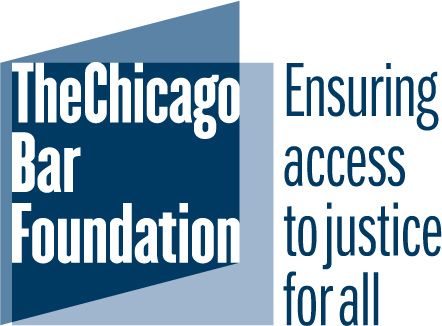Earlier this week, I celebrated my 6oth birthday. As we get older, our friends tend to get older too, and inevitably we start attending more funerals. Last night, I went to a memorial service for Melvin Haywood. Next week, I will go to a funeral for Ra Chaka. Over the last few weeks, I have followed Facebook posts by a Mark, a friend my age who is fighting cancer—the posts chronicled his car trip with his elderly mother. All perfectly normal things that typical Americans do every week. But what makes these three men different is just a few years ago, all were considered so dangerous by the State of Illinois that they were held in our highest security prisons, in solitary confinement, for years on end. They were thought so dangerous that when I met with them, it was through thick, bulletproof glass, and we had to speak through a scratchy microphone, with guards standing a few feet away—allegedly for my protection. What this week has driven home for me is just how normal the people who we lock away in cages, behind prison walls, are. They are not monsters; they are my friends.
I met Melvin about 15 years ago when he was transferred to Tamms supermax prison. At Tamms, he was labeled the “worst of the worst.” He was considered so dangerous that he could not be controlled, even in the segregation units of Illinois’ maximum security prisons. At Tamms, Melvin was locked in his cell, 24 hours a day most days. His “yard” was a bare concrete box he was allowed in for five hours a week—alone. He was eventually allowed a television (or a radio—not both), but was never allowed to take any classes, hold a job, attend religious services, or simply be in the same room with another human being—for almost a decade.
While the Department of Corrections always considered Melvin so dangerous that he had to be locked in isolation and treated like a rabid dog, the Illinois Prisoner Review Board disagreed. You see, Melvin was not serving a life sentence. He was sentenced under Illinois’ old law—before 1978—which meant he was reviewed yearly to see whether he was ready to be paroled. For years, his parole had been denied, because prosecutors claimed that he had a murder charge pending against him in Indiana, should he ever be granted parole in Illinois. With this over his head, the Board was never willing to grant parole. However, Melvin claimed he had never been to Indiana in his life, and swore there were no charges pending there, or anywhere else. Lawyers were finally able to get a letter from the Indiana State police confirming that there were no warrants for Melvin’s arrest. At his next parole hearing, his entire extended family appeared to support parole. While the Board normally only allows 3 supporters to attend, they allowed all 20 of Melvin’s supporters to address the Board. The hearing, which would typically last 20 minutes, went on for hours, as person after person explained to the Board how much Melvin had changed, and how they would welcome him into their community were he to be released. In the end, the Board granted Melvin parole—the only person to ever be released directly from Tamms supermax prison to the streets.
A few weeks after his release, Melvin was a guest speaker at the prisoners’ rights seminar I teach at Northwestern University School of Law. He described his time in solitary at Tamms, and his struggles winning parole, but he mainly talked about his life since his release. Melvin had been volunteering with CeaseFire, working with young people in violence-plagued communities. He was trying to tamp down the violence and ensure that no one had to experience his fate—losing decades of his life to the criminal “justice” system. Over the last few years I met with Melvin from time to time. He became a full-time Ceasefire employee—first in Chicago, and then in the Joliet area—working with youth, to keep them out of gangs, away from violence, and out of the criminal justice system. Melvin passed away peacefully in his sleep last weekend.
I met Ra Chaka back in the early 1980’s, while we were working on a class action case alleging that prisoners in solitary in Illinois did not have meaningful access to the courts. Ra Chaka first entered the criminal [in]justice system at the age of 10. As an adult, he received a sentence of 40-60 years for robbery. Rather than give up, Chaka decided to educate himself. He became an accomplished “jailhouse lawyer.” But this meant he also ruffled a lot of feathers among prison officials, and spent many years in solitary confinement. Wherever he was, Chaka used his hard-won knowledge to work on other prisoner’s legal cases, to bring a little justice behind the walls. After he was finally paroled in 1996, he devoted his life to community organizing on Chicago’s South Side, focusing on children in danger of following his path into the juvenile system. He also worked with attorneys on innumerable innocence claims, and spoke whenever possible about the prisons, and his friends still behind bars. I last saw Chaka at the funeral for Darby Tillis, the first man released from Illinois death row based on a finding of innocence—a case Chaka had worked on in prison. At that point, Chaka was confined to a wheelchair, and had had a series of strokes. But he was still fighting for justice, and made a Herculean effort to be there to say goodbye to Darby, his longtime friend. Chaka passed away last weekend, after a long fight against his deteriorating health.
I met Mark in 1998. He was one of the very first people transferred to Tamms supermax prison when it opened in March of 1998. Mark became one of the lead plaintiff in our lawsuit challenging the way men were selected for Tamms, and the conditions they were subjected to—isolated 24 hours a day, with virtually no human contact. In 2010, after over a decade in isolation, Mark was transferred to the segregation unit at Stateville, and was then released as his sentence ended. After spending so many years in complete isolation, Mark initially had a hard time adjusting to life on the outside. However, he eventually settled down, and reconnected with his family. Sadly, a few years after his release, he was diagnosed with cancer, and has now undergone several rounds of chemotherapy and surgeries…without success. Last month, he and his elderly mother took a road trip down the east coast, stopping at motels along the way, sightseeing, and posting multiple pictures on Facebook. There is a wonderful picture of Mark and his mom at a hotel pool, as he helps her into the water, with huge smiles on both of their faces—nothing special, just a normal family picture, like billions of others posted on Facebook. I looked at it, and then realized that just six years ago, the State of Illinois considered this man so dangerous that he had to be locked in a box, isolated from all human contact.
Keeping these older men (and people of all genders) in cages is inhumane. It serves no purpose—they are no threat to anyone. It is extraordinarily expensive, as their medical expenses mount, and they need increased levels of care. Our prisons are bulging at the seams: we must solve the problem of over-incarceration sooner rather than later. Releasing people who are elderly, ill, and/or infirm seems like a good place to start.















